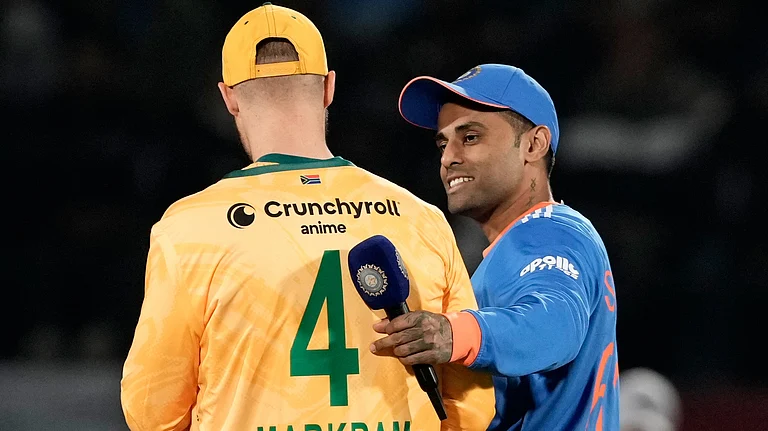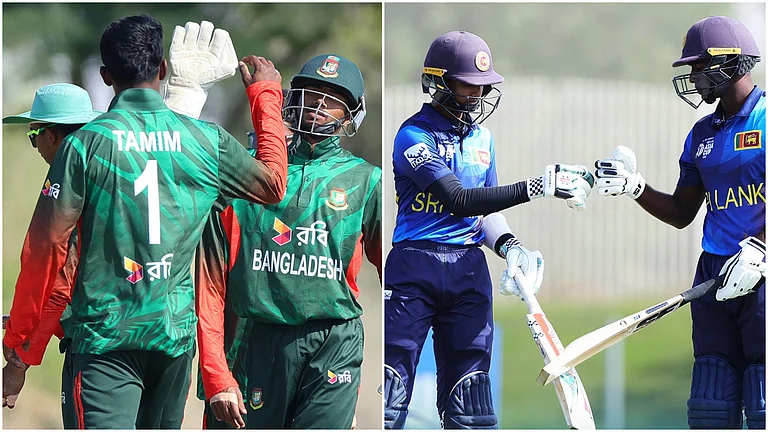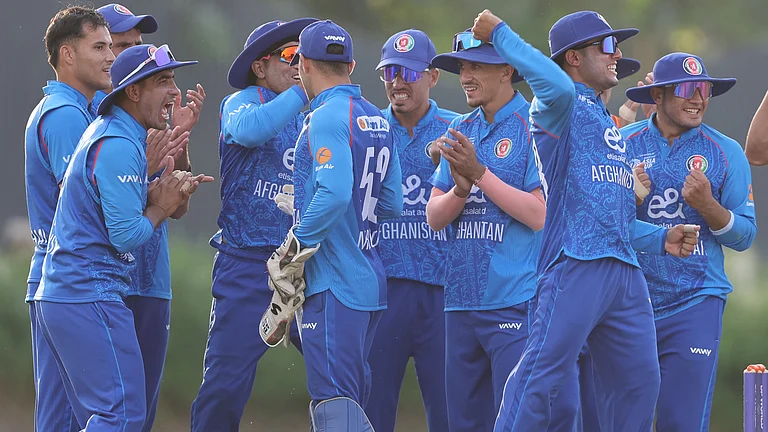Saadat Hasan Manto, the great short-fiction writer, once commented about those ardent Punjabis in Pakistan who, in order to appear nationalists, purposefully tried to speak Urdu, which had just been declared the national language by the new country’s rulers in order to forge a nationalistic identity. “Agar koi Punjabi Urdu bolta hai, aisa lagta hai woh jhooth bol raha hai (Whenever any Punjabi speaks Urdu, it looks as if he is lying). Manto could well have made the analogy today by replacing Urdu with Hindi, and Punjabi with an Indian language whose native speakers, barely acquainted with the Hindi literary treasure, are trying to project it as the national language for a political agenda.
Language is among the most powerful and emotive mediums of both individual and national consciousness. A flag or an emblem is deliberately chosen at a given moment, whereas a language is a reservoir of a living memory spanning across centuries. The first initiation of an individual to the world is through the language one learns at home. Political masters can introduce any arbitrary insignia to a population and expect them to follow it, but not a language that is not rooted in the land.
ALSO READ: Let A Language Contend
Protesting against imposition of Urdu in former East Pakistan, several students and activists were killed in police firing in Dhaka on February 21, 1952—the date now celebrated by UNESCO as International Mother Language Day. In the post-colonial era, Pakistan became the first country whose division had its roots in language protests. Eight months after the Dhaka incident, in October 1952, a freedom fighter named Potti Sriramulu began a fast-unto-death in Madras demanding a separate state for Telugu-speaking people. The Indian National Congress had recognised the nation’s linguistic diversity as early as in 1917 when it promised the creation of linguistic provinces in independent India. But the Jawaharlal Nehru government, having already suffered a Partition on religious lines, now believed it unwise to divide states on the basis of language. Sriramulu died during the fast on December 15, sparking off violent protests that led to the formation of Andhra Pradesh, before several other states saw similar linguistic reorganisation. And in 1965, several persons immolated themselves in Tamil Nadu protesting the imposition of Hindi.
Home Minister Amit Shah April 2022
Stoked afresh, the embers of the debate over Hindi as the national language have again threatened to turn into a raging fire that had once singed the land of multiple languages and scripts. Significantly, the demand to make Hindi the national language doesn’t emerge from a love for the language. It’s a political project, with the language becoming a tool for constructing a supposed national unity. A proposition that a unifying language is necessary for national consciousness. For a party whose biggest agenda is to repeatedly make Indians believe that they lack a national identity, Hindi is the latest tool.
Hindi was a political project during the freedom movement as well, when it became a language of resistance, with several nationalist leaders and Hindi writers working together. There were campaigns to make Hindi the national language, led by none other than Mahatma Gandhi. But they had genuine love for Hindi and, more importantly, India, then divided into princely states and reeling under foreign rule, needed unifying forces to rally against the British empire. But 75 years later, the Republic does not need politics around a national language. “You can have either the nation or the national language,” wrote literary scholar Harish Trivedi, who seamlessly traverses the worlds of English and Hindi and is well-versed with literatures in various Indian languages.
In fact, an influential Hindi-speaking BJP lawmaker also expressed his displeasure. “There is no need to stir up the language debate now. Various languages have strong literary establishments. You can’t pitch Hindi against them,” the Rajya Sabha MP tells Outlook, underlining that many others in the party are also unhappy with the debate over Hindi.
***
A language, when invoked as a collective memory, does also help in forging a national consciousness. Various countries of modern Europe were constituted on the basis of one language, one nation. A few centuries on, the sentiment has only intensified. A 2017 PEW survey on the “national identity attributes” in 14 countries “found language as the most critical to national identity”. The majority population in each of the 14 countries—including countries of Europe, Japan, the US and Australia—said it was “very important to speak the native language to be considered a true member of the nation”. A staggering 80 per cent of people in the Netherlands, the UK and Hungary, and over 75 per cent in Germany, France and Greece believed that a common language is the most important requisite to nationality.
It might be true for Europe, but to make a single language the foundation of nationalism in a multilingual nation is a flawed understanding of the land. India is united by myriad myths and legends that are recounted in different languages with regional variations, of which Ram Katha is the prime example. India’s cultural unity has sustained over the millennium not because of any single language, but by an incredibly rich pool of languages that may appear different on surface. Politics may pit one against the other, but there always exists an unspoken camaraderie among them. Some of India’s finest moments, both literary as well as nationalistic, were recorded when multiple languages pooled their joint talent to produce a dazzling body of literature that was emblematic of a unifying consciousness. The Bhakti literature, among the greatest literary outputs the land has seen, a literature that was also a great political statement, emerged in southern India from the Tamil saints before it moved northwards and eastwards encompassing Marathi, Awadhi, Brij, Punjabi, Bengali, Assamese and several other languages over a few centuries. The regions of these saint-poets came under different kingdoms, ruled by kings of different religions and beliefs, and yet there was a remarkable unity of expression, marking a great instance of multilingualism forging a national identity.

Take for instance, the greatest instance of multilingualism in the last century, not just in India but perhaps anywhere in the world, a phenomenon perhaps yet to be fully appreciated. Gandhi’s autobiography, originally written in Gujarati and immediately rendered into English by Mahadev Desai, has been translated in almost all Indian languages, often in more than one translation, making it arguably the most translated work in India in the last hundred years. Reading Gopalkrishna Gandhi’s extraordinary paper on these translations, Gandhi’s Autobiography: The Story of Translators’ Experiments with the Text, I learnt with delight about the creative liberty various translators, including Desai, had taken to render the Mahatma into their own language. Each text carries its own merit; there are as many Gandhi autobiographies as there are languages. Gandhi, like the Ramayana and the Mahabharata, could be read like a national epic, a mahakavya, written and narrated by Indians over several generations— with Desai’s English version, to use Gopalkrishna’s words, being the “twin” of the Gujarati’s.
***
There are a few political projects that India needs for languages; that is, if the rulers sincerely want to invest in the sphere. The first is for multilingual spaces. In the last few decades, India has nearly stopped producing bilingual, let alone multilingual, writers. Many Indian writers born before Independence were seamlessly polyglots, but the eminent ones in the last few decades are cocooned in their own languages and find little creative stimulation to work in, or even read more than one language. It cannot be a mere coincidence that the shrinking of the multilingual space has coincided with the surge of the Hindutva project. A language carries with it a distinct cultural code. Several languages working together at various planes restrict the formation of an authoritarian centre. Like a vibrant religious diversity, a thriving linguistic diversity is a natural hedge against political-cultural authoritarianism.
In May 1970, the Indian Institute of Advanced Study, Shimla, organised a fortnight-long seminar to examine the motto of the Sahitya Akademi that “Indian Literature is one though written in different languages”. The then IIAS director Niharranjan Ray, in his introductory lecture, stunned the audience by questioning the slogan and stating that “what we have in India is as many Indian literatures as there are languages”. The Akademi’s secretary Krishna Kriplani, himself a towering man of letters, went a step ahead by stating that “Indian literature is, in fact, less homogenous than even the literature of Europe as a whole”. With devastating wit, he stated: “We may please ourselves by proclaiming that the peacock is our national bird and the lion our national animal, but can we overlook that we have in fact many more common crows than peacocks, and many more asses than lions?” Then Union minister for education V.K.R.V. Rao was among the audience.
Conversations among languages also enrich their reservoir. Hindi, for instance, has heavily and gratefully borrowed from several Indian languages. Let me cite a personal example. The Hindi word for translation is anuvaad, a word of Sanskrit origin, implying something that follows. Sometime ago I came across a word used in Malayalam for translation, Vivartanam, again derived from Sanskrit. Vivarta is a word from the Advaita dictionary. Vivarta operates at two levels. It first denotes a thin veil that spreads over the ultimate truth and then projects a different picture that constitutes the reality for all purposes until the veil is removed. I marvelled at my Malayali ancestors who plucked out a word from a profound philosophical context and used it for their literature, a word that brilliantly illuminates the art and philosophy of translation. Supremely thrilled, I immediately brought the word into my Hindi lexicon. How many such multilingual conversations are we having these days?
***
The next political project can be to contest and demolish the contemptuous hierarchy that exists between English and other languages. It warps the literary-academic discourse, disproportionately grants more power to English writers than they actually deserve, and injects a dangerous inferiority complex in other languages. To be sure, disturbing hierarchies exist among Indian languages as well, between Hindi and Bhojpuri, for instance.
And if one is a true well-wisher of Hindi, one should work towards reviving its media and ensuring greater professionalism in publishing houses. It may be one of the several Indian languages, but the vast market and electoral impact of 528 million speakers can’t be ignored. A vibrant national discourse cannot be initiated and constitutional values cannot be easily upheld with Hindi news channels and newspapers which solely trade in hate. Then comes the Hindi publishing industry that barely invests in editorial desks and faces endless allegations of duping its writers. Few publishing houses have quality editors as manuscripts are often sent to press with a perfunctory proof-check. Veteran Hindi writer Vinod Kumar Shukla recently stunned the literati by issuing a video statement that his publishers have been cheating him for long over the royalty issue.
Amid this debate, Geetanjali Shree’s Ret Samadhi has become the first Indian novel to be shortlisted for the International Booker Prize. Composed with searing creativity, the Hindi novel invents several words. Consider this. A Hindi word kanafoosi denotes secret whispers. There’s a sequence in the novel of some crows holding a conversation. Geetanjali invents a brilliant word kagafoosi for the situation, the word kag means crow. Hindi needs such creative fervour that comes from its ardent practitioners, not politicians. What do they know of Hindi who only Hindi know?
(This appeared in the print edition as "What Do They Know of Hindi?")
ALSO READ


























